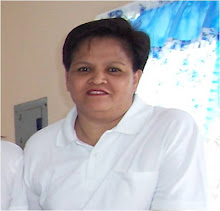New Bilibid Prison

The New Bilibid Prison (NBP) is one of seven major facilities handled by the Bureau of Corrections (BuCor), an agency under the Department of Justice. Bilibid, as it is more popularly referred to, is located in Muntinlupa City. It is one of the main stations for male offenders from different parts of the Philippines.
History
The Old Bilibid Prison, built in Manila in 1847, was the primary correctional facility in the country before 1900. It was formally opened through a Spanish Royal Decree in 1865. When the Old Bilibid was moved from Manila to Muntinlupa in 1936, it was "renamed" the New Bilibid Prison.
Iwahig Prison and Penal Farm
Penal Farm is one of the most popular prisons in the Philippines. It was established in 1902 by the United States for the Filipino prisoners who had fought with the American during their colonization in the Philippines.
The Iwahig Prison and Penal Farm is located at Baranggay Iwahig, Palawan and is 30 minute ride from the province's capital, Puerto Princesa. Currently, it houses some 4,000 inmates.
A Unique Prison
Unlike most prisons and other penal institutions,the convicted prisoners (specifically the minimum security prisoners) in the Iwahig are not locked up within what they call as the "colony". Only those who are deemed to be "medium or maximum security prisoners are given tighter monitoring.
In the Iwahig Prison and Penal Farm, minimum security prisoners get to be involved in agricultural work and live in dormitories.
Another feature of this colony is that families of the prisoners can live and stay with them. these family members can also work at Iwahig vast land area and at some shops selling handicrafts to earn a living.
Iwahig Prison and Penal Farm
The Iwahig Prison and penal Farm colony encompasses a 37-hectare picturesque farm. With coconut palm trees, rice, and other crops planted and cultivated by the prisoners and their families, the colony and the penal farm attract tourists and visitors alike. Within the farm is Balsahan River, known for its cascading waters coming from the nearby mountain.
Sablayan Prison and Penal Farm
The Sablayan Prison and Penal Farm is situated in Occidental Mindoro, Philippines. By the virtue of Presidential Proclamation no. 72, it was established on September 26, 1954
Brief Information
Sprawled on a 16, 190-hectare land area, the Sablayan Prison and Penal Farm is one of the prisons nearer to Metro Manila.
According to records and file, the Sablayan prison first housed colonists, employees and prisoners on January 15, 1955. Since its establishment, the prison is continuously improved through construction of several buildings, including dormitories, employee's quarter, guardhouse, schoolhouse, chapel, recreation hall and Post Exchange.
The Sablayan Prison and Penal Farm is also where prisoners from New Bilibid Prison are brought for decongestion purposes. It follows the same colony standards as other penal farms.
San Ramon Prison and Penal Farm
The San Ramon Prison and Penal Farm is situated in Zamboanga City, Philippines. It was established to house the Muslim rebels and prisoners opposing the Spanish leadership. The prison is right in front of the Jolo sea and is sprawled within a 1, 414-hectare property.
Brief History
It was on August 21, 1869 when the San Ramon Prison and Penal Farm was built. Decades later, when the Americans took over the country, the Bureau of Prisons was created under the supervision of the Department of Commerce and Police.
Due to the havoc wreaked by the Spanish-American war, the penal farm was destroyed. In 1907, it was then re-established and started to house prisoners from Mindanao. By 1915, it was placed under the protection of the Bureau of Prisons.
Today
Because of the establishment of the San Ramon Prison and Penal Farm, a barangay named after it, was also formed. At the
present, the prison also attracts many visitors and foreigners because of its beauty and breath-taking view.
Davao Prison and Penal Farm
The Davao Prison and Penal Farm is the first and one of the oldest and most recognized penal colonies in the Philippines. Located in Santo Tomas, Davao del Norte, the penal colony is sprawled at the vast Tadeco Banana Plantation.
Formerly known as the Davao Penal Colony, the Davao Prison and Penal Farm was built on January 21, 1932. It was established within a 5, 212-hectare of land and was supervised by Bureau of Corrections and the Department of Justice.
The Bureau of Corrections, alongside with the Department of Justice is geared towards the training and reformation of the prisoners. These two departments also aims to teach the prisoners how to read, write, do jobs like carpentry, wood carving, barbering, basic appliance repairing, plumbing, shoe making. By uplifting their literacy and awareness, the prisoners will learn how to be responsible citizens especially when out of the prison.
To date, there are approximately 2,863 prisoners detained at the Davao Prison and Penal. With them are around 187 jail guards and the colony's personnel’s.
Other Information
The Davao Prison and Penal Farm has partnerships with the Tagum Agricultural Development Co. (Tadeco). Today, there are about 800 prisoners working for Tadeco's banana plantation.
Bureau of Correction of Mandaluyong City
Correctional Institution for Women
Leyte Regional Prison



